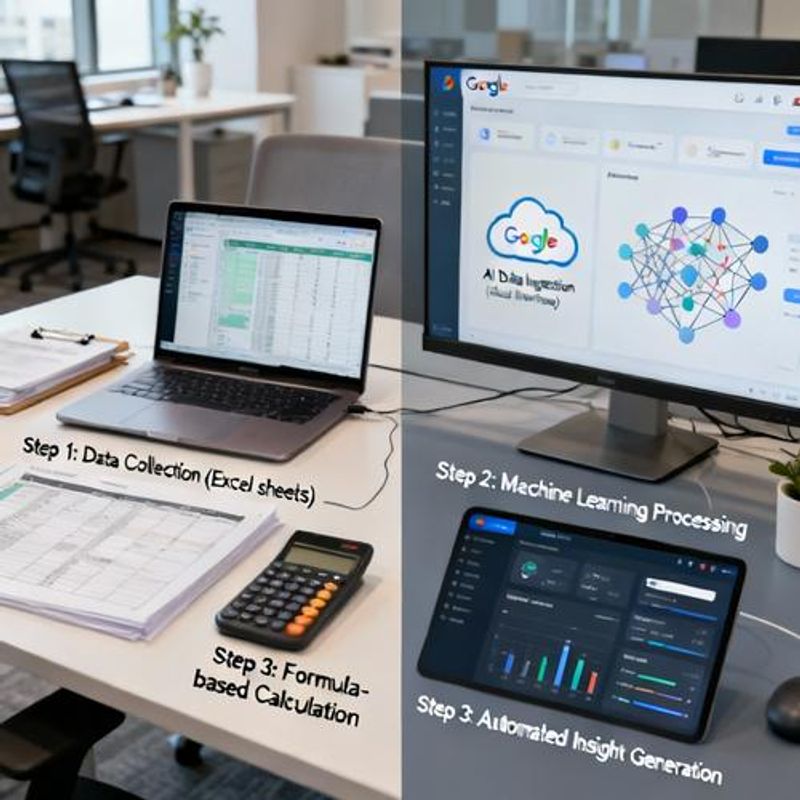Google AI Tools List: 15 Essential Analytics Solutions for Data Scientists in 2024

Struggling to keep up with the rapidly evolving landscape of AI-powered analytics tools? As a data analyst, you're likely spending countless hours manually processing datasets, building predictive models from scratch, and wrestling with complex machine learning implementations. This comprehensive Google AI tools list will save you weeks of research and help you identify the exact solutions that can automate your workflow, enhance your analytical capabilities, and deliver insights faster than ever before.

Why Google AI Tools Matter for Modern Data Analysis
Data analysts face unprecedented challenges: exponentially growing datasets, pressure for real-time insights, and the need to democratize analytics across organizations. Traditional tools often fall short when dealing with unstructured data, require extensive coding knowledge, or lack the scalability needed for enterprise-level analysis. Google's AI ecosystem addresses these pain points by offering pre-trained models, automated machine learning capabilities, and seamless integration with existing data infrastructure. Whether you're performing exploratory data analysis, building predictive models, or creating interactive dashboards, Google's AI tools can significantly reduce time-to-insight while improving accuracy.
Quick Reference: Top Google AI Tools by Use Case
Before diving into detailed explanations, here's your at-a-glance guide to the most impactful Google AI tools for data analysis:
- AutoML Tables - Automated machine learning for structured data without coding
- BigQuery ML - SQL-based machine learning for large-scale data analysis
- Vertex AI Workbench - Integrated development environment for ML workflows
- Document AI - Automated document processing and data extraction
- Data Studio with AI insights - Enhanced visualization with automated pattern detection

Essential Google AI Tools for Data Processing and Analysis
BigQuery ML transforms how you approach predictive analytics by allowing you to build and train machine learning models directly within your data warehouse using familiar SQL syntax. Instead of exporting terabytes of data to external ML platforms, you can create regression, classification, and clustering models where your data already lives. The tool supports linear regression, logistic regression, k-means clustering, and even deep neural networks. For time-series forecasting, the ARIMA_PLUS model can automatically handle seasonality and trends without manual parameter tuning.
AutoML Tables eliminates the need for extensive machine learning expertise by automatically handling feature engineering, model selection, and hyperparameter tuning. Simply upload your structured dataset, specify your target variable, and AutoML will test hundreds of model combinations to find the optimal solution. The platform provides detailed model explanations, showing which features contribute most to predictions – crucial for regulatory compliance and stakeholder buy-in.
Vertex AI Workbench serves as your unified development environment, combining Jupyter notebooks with managed infrastructure and pre-installed ML frameworks. You can seamlessly switch between exploratory analysis, model development, and production deployment without environment configuration headaches. The integrated version control and collaboration features make it ideal for team-based analytics projects.
Specialized AI Tools for Unstructured Data Analysis
Document AI revolutionizes how you extract insights from unstructured documents like invoices, contracts, and forms. The pre-trained processors can identify and extract specific fields with high accuracy, while the custom processor allows you to train models for organization-specific document types. This is particularly valuable for financial analysis, compliance reporting, and customer data aggregation projects.
Natural Language AI enables sentiment analysis, entity extraction, and content classification at scale. For customer feedback analysis, product review insights, or social media monitoring, these APIs can process thousands of text samples in minutes rather than days of manual coding.
Practical Implementation Guide and Templates
Start with BigQuery ML for your first Google AI implementation. Create a simple linear regression model using this SQL template: CREATE MODEL `your_dataset.sales_forecast` OPTIONS(model_type='linear_reg') AS SELECT feature1, feature2, target_variable FROM `your_dataset.training_data`. Always split your data into training and validation sets using RAND() function for reliable model evaluation.
For AutoML Tables, ensure your dataset has at least 1,000 rows and fewer than 1,000 columns for optimal performance. Clean missing values beforehand and ensure your target variable is properly formatted. The tool works best with tabular data that has clear patterns and sufficient historical examples.

Common Pitfalls and How to Avoid Them
Many analysts rush into AutoML without proper data preparation, leading to poor model performance. Always perform exploratory data analysis first, check for data leakage, and ensure your training data is representative of future scenarios. Don't rely solely on automated accuracy metrics – validate results against business logic and domain expertise.
Cost management is crucial when working with Google AI tools. Set up billing alerts, use preemptible instances for training jobs, and regularly monitor BigQuery slot usage. Many organizations experience bill shock from running large-scale ML jobs without proper resource planning.
Avoid over-engineering solutions with complex AI tools when simpler statistical methods might suffice. Start with basic models and gradually increase complexity only when business value justifies the additional effort and maintenance overhead.
Next Steps: Building Your Google AI Toolkit
Start your Google AI journey by setting up a Google Cloud account and experimenting with BigQuery's public datasets. The COVID-19 and e-commerce datasets provide excellent learning opportunities without data acquisition costs. Begin with simple SQL-based ML models before progressing to AutoML and custom Vertex AI solutions. Remember that successful AI implementation is about solving real business problems, not showcasing technical complexity. Focus on use cases where automation can free up your time for higher-value strategic analysis and stakeholder communication.